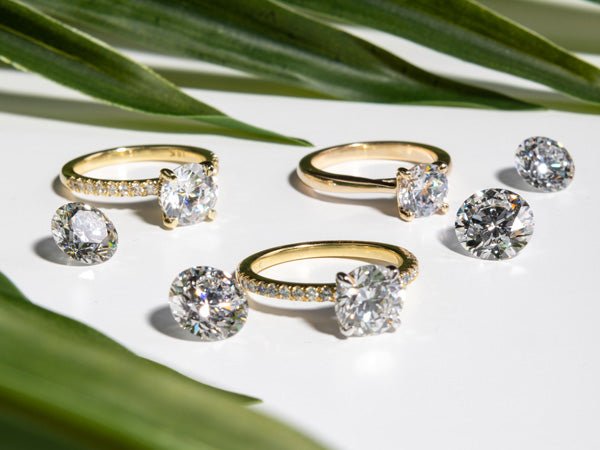Introduction to Lab Grown Diamonds
Lab grown diamonds, also known as synthetic diamonds, are created in controlled environments that replicate the natural diamond-growing process. Unlike natural diamonds formed over millions of years beneath the Earth’s crust, lab grown diamonds are produced within weeks using advanced technological methods. This controlled process allows for precise manipulation of diamond characteristics lab grown diamonds investment, resulting in gems that are chemically, physically, and optically identical to natural diamonds.
Popularity and Growth of Lab Grown Diamonds
The popularity of lab grown diamonds has soared in recent years, driven by increasing awareness of their environmental and ethical benefits. According to industry reports, the market for lab grown diamonds is projected to expand significantly, with consumers showing a growing preference for sustainable and responsibly sourced gems. This shift underscores a broader trend towards ethical consumerism in the luxury goods sector.
Comparison with Natural Diamonds
When comparing lab grown diamonds to their natural counterparts, several key differences and similarities come into play. In terms of quality, lab grown diamonds exhibit the same optical and chemical properties as natural diamonds. However, they are typically priced lower due to lower production costs and a more controlled supply chain. This pricing advantage makes lab grown diamonds an attractive option for budget-conscious consumers and investors alike.
Environmental and Ethical Considerations
One of the most compelling reasons to invest in lab grown diamonds is their minimal environmental impact compared to traditional diamond mining. The diamond mining industry has historically been associated with environmental degradation and social controversies. In contrast, lab grown diamonds require significantly less energy and water to produce, contributing to lower carbon footprints and reduced ecological footprint.
Factors Influencing Lab Grown Diamond Prices
The price of lab grown diamonds is influenced by several factors, including production costs, market demand, and technological advancements. As manufacturing techniques improve and economies of scale are achieved, the cost of producing lab grown diamonds is expected to decrease further. This trend could potentially enhance their affordability and accessibility in the consumer market.
Investment Potential of Lab Grown Diamonds
From an investment perspective, lab grown diamonds offer promising growth opportunities. As consumer acceptance and market demand continue to rise, the value proposition of lab grown diamonds as an alternative investment asset strengthens. Investors looking for diversification and ethical considerations in their portfolios may find lab grown diamonds to be a compelling choice.
Risks Associated with Investing in Lab Grown Diamonds
Like any investment, investing in lab grown diamonds carries certain risks. Market volatility, changes in consumer preferences, and fluctuations in perceived value are factors that could impact the investment performance of lab grown diamonds. Understanding these risks and conducting thorough due diligence is essential for mitigating potential drawbacks.
Certification and Authentication
Ensuring the authenticity and quality of lab grown diamonds is crucial for both consumers and investors. Certified grading authorities, such as the International Gemological Institute (IGI) or Gemological Institute of America (GIA), provide independent assessments of diamond quality based on internationally recognized standards. Verifying certification ensures transparency and peace of mind regarding the authenticity of lab grown diamonds.
Key Players in the Lab Grown Diamond Industry
Several prominent manufacturers and retailers are leading the charge in the lab grown diamond industry. Companies like Diamond Foundry, MiaDonna, and Ada Diamonds are known for their innovation and commitment to sustainability. Understanding the landscape of key industry players can provide insights into market dynamics and potential investment opportunities.
Practical Tips for Investing in Lab Grown Diamonds
For potential investors, conducting thorough research and due diligence is essential. Consider factors such as supplier reputation, certification authenticity, and market trends before making investment decisions. Diversifying your portfolio with lab grown diamonds can offer a balanced approach to wealth management while aligning with sustainable investment principles.
Comparative Analysis: Lab Grown vs. Natural Diamonds as Investments
Comparing the investment potential of lab grown diamonds to natural diamonds involves assessing risk-return profiles and long-term growth prospects. While natural diamonds have a longstanding appeal and historical value retention, lab grown diamonds offer competitive advantages in terms of pricing transparency and ethical sourcing. Both options present unique opportunities for investors based on individual financial goals and risk tolerance.
Conclusion
In conclusion, investing in lab grown diamonds represents more than just a financial opportunity—it embodies a commitment to sustainability, ethical sourcing, and technological innovation. As consumer preferences evolve and market dynamics continue to shift, the potential for growth and value creation in lab grown diamonds remains compelling. By staying informed, leveraging industry insights, and aligning investment decisions with personal values, investors can position themselves strategically in this burgeoning sector

